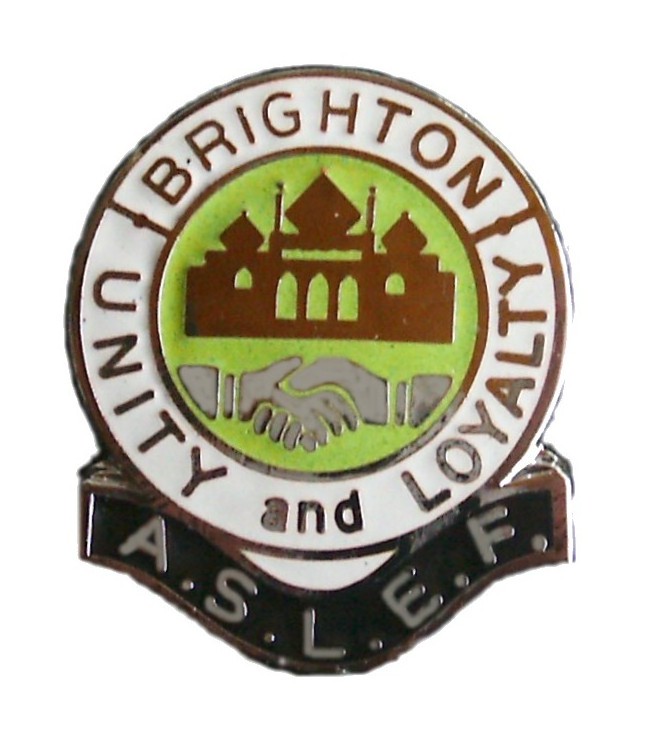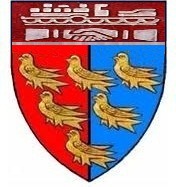CLAYTON TUNNEL
8th SEPTEMBER 1845
INVOLVING BRIGHTON ENGINEMEN JAMES CARTER
Extracted and adapted from the Ministry of Department Report by
C.W. Paisley Major Generaland Inspector General of Railways.
On the Monday 8th September a accident occurred at Clayton Tunnel, as the seven o’clock train from Brighton was
approaching the Clayton Tunnel at a slow rate, caused by the slippery state of the rails from the fog, a pilot-engine,
proceeding as usual to its station at Horley, having overtaken the train struck the last carriage, a third class one, which was
thereby unhooked the train. The passengers in that carriage sustained a severe shock, and many of them jumped out; in so
doing, one passenger hurt his foot, and others sustained some bruises: a female also appeared to suffer from the concussion
and alarm.
There was no injury whatever occasioned to the engine or carriage.
The conduct of the driver of the pilot-engine and the order under which he acted, will be strictly investigated, and such steps
taken herein as may best tend to prevent the recurrence of a like accident in future
The third class train consisted of 15 carriages, which was overtaken and run into by a pilot-engine, on the morning before
mentioned about five miles from Brighton; but the collision must have been moderate, though it broke off the coupling between
the last carriage of the train and that in front of it, because on examining that carriage, I found that no other injury had been
done to it, and the front part of the frame of the engine that came in contact with it was also uninsured; Henry Fitzgerald, the
Chief -Guard of that train, informed me that he himself, sitting on the fifth carriage from the rear, felt no shock, nor did he
know that any accident had occurred till he heard the cries of passengers behind him, and saw that several of them jumped
out, and he believes that none would have been hurt had they all remained quiet in which opinion I fully concur; though by
jumping out they might have saved their lived, had the collision been a violent one.
The first question I put to Mr. Peter Clarke, the manager of the London Brighton Railway, was whether the pilot-engine had
been intended to propel the train behind, on reaching an ascending gradient; on which he reminded me of a conversation I
had with him, when employed on the North Midland Railway, two or three years ago, in which we agreed in opinion, that
propulsion from behind might be dangerous to the public safety and ought not to be allowed; and he assured me that he had
not only put an end to this system on the North Midland, but also that, on entering the service of the Brighton Railway
Company, he had, by approbation of the directors, given strict orders that it should be discontinued and that assistant engines,
when necessary, in future should always be hooked on in front of the train that required them.
In respect to the pilot-engines, they always remained in Brighton at night, but were ordered to proceed from thence to Horley,
hooked on in front of the earliest third class train, where they were to remain all day in readiness for such service as might be
required of them, an return again to Brighton hooked on i front of the last train from London. Some time after this order was
given, he directed that, if coals or other materials were waste at Horley, or any of the intermediate stations from Brighton, the
pilot-engines should carry those materials; in which case they were not to be attached in front of the early passenger trains,
but to follow them at a sufficient distance in rear to prevent collision. Horley was chosen as the day station for the pilot-
engines, partly because it was nearly half way to London, and partly because both the up and down trains of the Brighton
Railway Company have to encounter steep ascending gradients on quitting it. After the pilot-engines had orders to take coals
&c., on special occasions, the drivers of those engines made this a pretext for disobeying the order of always attaching in
front; instead of which, they followed the passenger trains at some distance in rear, unless the enginemen of such trains made
a signal for assistance, which they only did when their trains were unusually heavy. According to this practice, and in
disobedience of Mr. Clarke’s orders, which crept in unknown to that gentleman, but which appears not to have been general
but occasional, James Carter, the pilot enginemen who ought to have hooked on in front of the the third class train on the
morning of Monday, the 8th September, having no coals or other materials to carry, followed in rear of it 12 minutes after it
had started; and on entering the cutting that leads into Clayton Tunnel, about five miles from Brighton, he met with dense fog,
and according to his own account, shut off his steam in in order to stop at the entrance of the tunnel, when he suddenly saw
the train before him at the distance of about 20 yards, and reversing his engine, but not without a gentle collision, the train
itself moving very slowly at the time in consequence of the state of the state of the rails, which were rather slippery. If the pilot
engine had been in front, this accident, which occasioned great alarm and some injury, though not serious, to the passenger in
the last carriage, could not have happened, and the train would not have lost five minutes timess it did between Brighton and
this spot.
Mr. Henry Weathburn, foreman of the locomotive department and workshops at Brighton, being examined in my presence,
declared that, according to Mr. Clarke’s directions, he had given proper orders that the pilot-engines should always be hooked
on in front of the early trains, except when required for special duty of carrying coals &c., as aforesaid; and he stated that he
did not know that these orders had ever been disobeyed, until the accident in question proved that it had not been attended to
that morning, and then he was informed that it had been occasionally disobeyed before, in consequence of the enginemen of
the early trains refusing to have the pilot-engine hooked in front of them when their trains were light. Hence this collision was
caused, partly by the neglect of Mr. Weatherburn, who contented himself with giving an order to the enginemen, without
ascertaining, as he ought to have done, that it was carried into effect, and partly to be disobedience of order thus
communicated by James Carter, the pilot-enginemen, under the circumstances before stated, who was the first detected in this
improper practice, though probably it may have occurred repeatedly before; for it is to be regretted, that the servants of
railway companies have often appeared deficient in that feeling strict implicit obedience to their orders, which is no less
necessary on railway than on military service.
The locomotive foreman at Brighton and the driver of the pilot-engine, being the parties by whose neglect and inattention to
orders issued by the directors the accident on the 8th September 1845 occurred, have been discharges from the service of the
Company.



